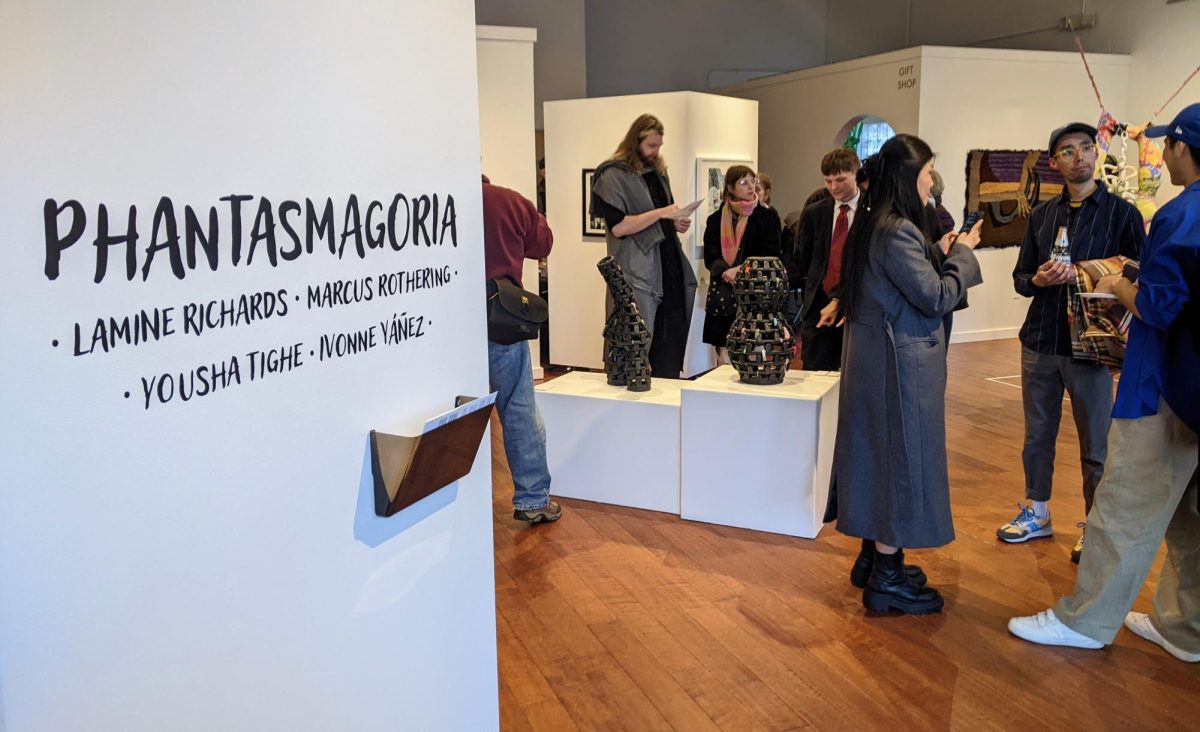It all began with an apple.
As the story goes, God appeared after Adam and Eve ate the forbidden fruit. God expelled the pair from the garden, called the ground cursed and VOILA! We’re all sinners, and we’re all going to die.
Since this saga was put to print, artists around the globe have portrayed it. And viewers have sinned vicariously just by looking.
Today’s artists continue to explore this relationship between art and viewer. Some are using the local gallery Altered Esthetic’s show “The Art of Sin” to express what people shouldn’t, or should, do.
“It’s not so much a point of glorifying sin,” said Jamie Schumacher, the exhibit’s curator. “This show is just to see how sin is interpreted and depicted by different artists.”
Schumacher started the gallery in 2004 with her now ex-boyfriend. Its first show, “The Art of War,” was not only a response to the political situation at the time, but also the first in a series of themed exhibits.
The idea for this exhibit began as a response to religious art shows in the Twin Cities, most of which were at churches.
“I had the only Buddhist painting out of over 100 artists,” Schumacher said.
“The Art of Sin” is Schumacher’s reaction to this statistic. It allows artists with certain beliefs, inside or outside the Christian doctrine, to say what they think. Much of the exhibit looks at religion’s version of sin. Some doesn’t.
Regardless of whether the artists chose to depict sin as caustic or constructive, most in this season’s show portray sin as inevitable.
One artist, Gregg Louis, writes in the biography blurb next to his painting, “To avoid sin is to avoid humanity.”
By walking into Altered Esthetics, the viewer chooses to surround himself or herself with sin. Those who attend will see paintings of bloodshed, etches of infidelity, collages of lust, a 2-foot-tall glass penis and visual renderings of President George W. Bush.
The presidential portrait, “Cowboy Wannabe,” wouldn’t seem sinful in any other context. The large canvas’ blurry orange background gives way to the big guy in the lower
left corner. Simple as it is, it’s only after one assumes the political affiliation of the artist that the subject matter appears sinful.
An artist who calls herself Pee Monster, whose work is on display at the gallery, says it’s important that sin be depicted artistically, whether in a positive or negative light.
“People shouldn’t be afraid to see sin,” she said. “They see it every day.”
Mike Menasco, whose art appears on the front of the promotional postcard for the exhibit, agrees that regardless of the viewer’s reaction, sin should be displayed on a gallery wall.
“Everyone may not agree with certain subjects, but choice to be involved or not is one of the great things about our freedom,” he said. “You have the choice to change the channel or to not go to ‘The Art of Sin’ show. Art won’t hurt you.”
Menasco is attempting to undermine artists of the past by challenging beliefs and placing historic figures in situations in which they might or might not have participated.
His “Seven Sins” series specifically tackles this feat.
In his piece “Wrath” Menasco illustrates Mary Magdalene, a biblical figure who is thought to have washed and anointed the feet of Jesus, brutally nailing his feet to the cross.
“It is my artistic license,” he said. “My comfort in my own beliefs allows my art to not be confined by any organized perceptions.”
Menasco is one of many artists who portray sin by illustration.
Some artists, however, choose to do so by construction.
Emily Newman Kelly submitted a piece that defines “the art of sin” not necessarily as a product, but as an action.
Her piece, “Bible Flags,” is a banner made of dyed and sewn Bible pages. The end result isn’t sinful, but the act of destroying and reconstructing a holy text is worthy to some of an eternity with Lucifer.
“Homosexuality is a sin, bondage is a sin, that is a sin, that is a sin, that is a sin,” said Schumacher, pointing in every direction in the gallery.
Although all the artists interpret sin differently, most come back to the same idea – our bodies and what we choose to do with them.
“Why is it that video games are so gory, and it’s OK,” asked Schumacher, “but people still squirm when they see a naked woman?”
By seeing someone else’s interpretation, we can judge for ourselves what is sinful and what is just good fun.
We’re told to avoid sin. But the art at Altered Esthetics, like all art should, sabotages the age-old belief that ignorance is bliss.







